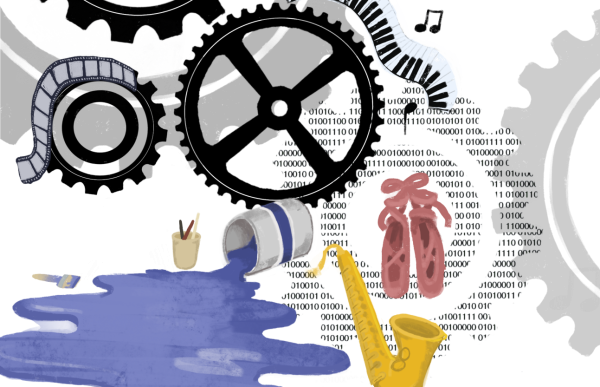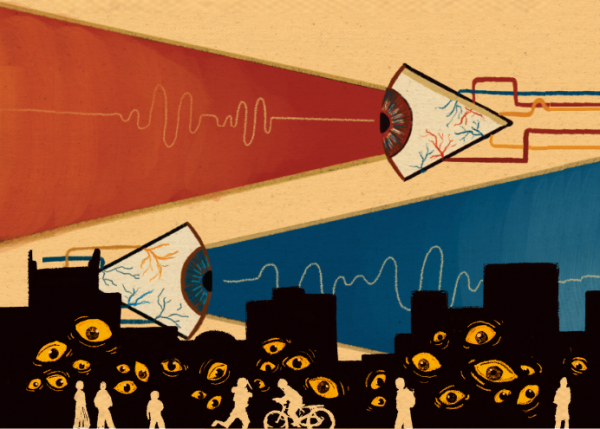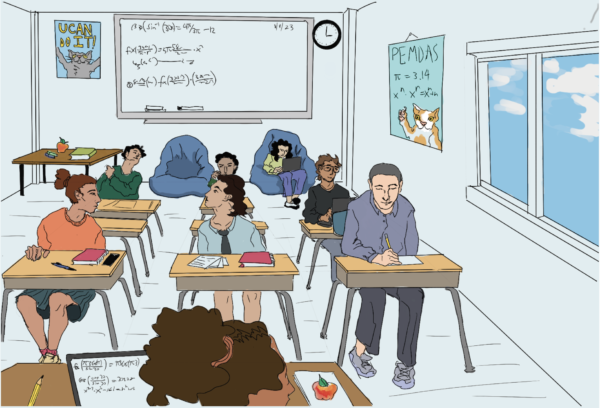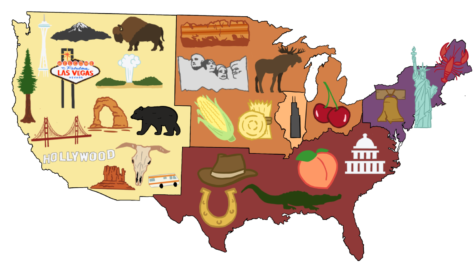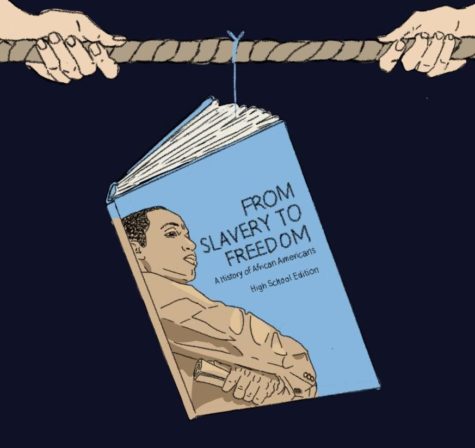The utilization of different tracking methods
March 22, 2019
The mandatory, five-hour-long test in the early morning is a familiar narrative to most high schoolers. Standardized testing has become ingrained in the public education system. Both New Trier and Evanston use tracking, but most ETHS students do not have to endure such an experience until their junior year. For students at New Trier, however, they must complete a placement test in the fall of eighth grade.
“You take four tests: verbal reasoning, reading comprehension, math and quantitative reasoning,” explains New Trier freshman Julia Wineberg. “A few months later, in January or February, you get your results back and it recommends you for your levels.”
The possible levels are College Preparatory Level 2, Honors Level 3 and High Honors Level 4.
Once the placement test recommends you for a level, students’ parents are able to override that request and move the student either up or down to a level they deem fit. As the academic year progresses, parents are given another opportunity to change their child’s level. Throughout the year, teachers are also given the opportunity to recommend their students for a different level.
“The advantage of [the level system] is that you can then be in a classroom with other students who share a similar level of skill on a particular topic so the course can move at a pace that is challenging to you but not overwhelming,” says Hayes. “The disadvantage of the level system is that as a student, it is easy to start to believe that the level system is about intelligence. So if you’re in the highest level then you’re smart, and if you’re in the lowest level then you’re not smart.”
Hayes says that while this is not how the system was created or intended to operate, they “struggle” to help students understand their level does not indicate their intelligence.
“Students who are in Level 2 start to feel like ‘well I’m not very smart because I’m in the 2 level course,’” says Hayes. “Then they graduate and they go to college and they’re way better prepared than most of their [college] classmates.”
Not too long ago, ETHS also tracked its students into freshman year classes. In 2010, ETHS detracked freshman English, history and biology courses. This choice was criticized by the Evanston community and the media, including the Chicago Tribune.
However, a 2017 article written by ETHS Assistant Superintendent for Curriculum and Instruction Peter Bavis claims that, to quote the piece directly, “it works!”
“Our first group of students to take Earned Honors English and History graduated in 2015. That group posted the highest average ACT score (23.9) in school history, took the most AP courses in school history, and earned the highest number of college-ready scores of 3 or more on AP exams,” Bavis writes in the article.
One thing is for sure: both schools put immense emphasis on going to college.
“I definitely think that ETHS pushes a slight agenda to try to get their graduates to go to college,” ETHS senior Quinn Sieja says. “They do offer a lot of support for those who want to seek a different path, but many of the meetings we have focus on college plans. The other options, trade school, gap years or going straight into the workforce always seem like a secondary option.”
Kurzman says that New Trier also centers “everything” around college. “[College] is the whole point of going to high school,” she says.
Kurzman explains that at the beginning of her freshman year, New Trier handed out packets suggesting that if students wanted to attend an Ivy League school, then they should follow a certain track. Whereas students who planned on attending a state school were instructed to follow a different track.
Every year, 98 percent of New Trier’s graduating class enrolls in college and 95 percent enroll in four-year programs. Meanwhile, at Evanston, 77 percent of the 2017 graduating class attended college and 61 percent enrolled in a four-year program.
However, such statistics are not entirely indicative of the quality of academics or the intensity in which the schools promote college, rather it is a matter of wealth and opportunity as well.
Both New Trier and Evanston send almost the same number of students to top tier colleges and universities. According to Niche’s 2019 Best Colleges in America, the 10 best schools in the country are MIT, Stanford, Harvard, Yale, Princeton, University of Pennsylvania, Columbia, Duke, Brown and California Institute of Technology. New Trier sent 15 students from their 2018 graduating class to those schools, and while ETHS sent 14 students. In fact, the biggest, and really the only sizable difference, the two schools have in college attendance is Oakton Community College. New Trier sent three students there last year, while Evanston sent 45.
“Often, you’ll hear the names of different community colleges thrown around like as a joke,” New Trier senior Alex Gjaja says. “It’s tough [to hear] because there are New Trier students who end up going to these community colleges.”
Some ETHS students report hearing stigmatizing sentiments regarding community college as well.
“Everything is kind of centered around going to a good college,” ETHS freshman Moksha Paudel says about ETHS. “When most people hear community college, they don’t think that it’s a very high education.”












